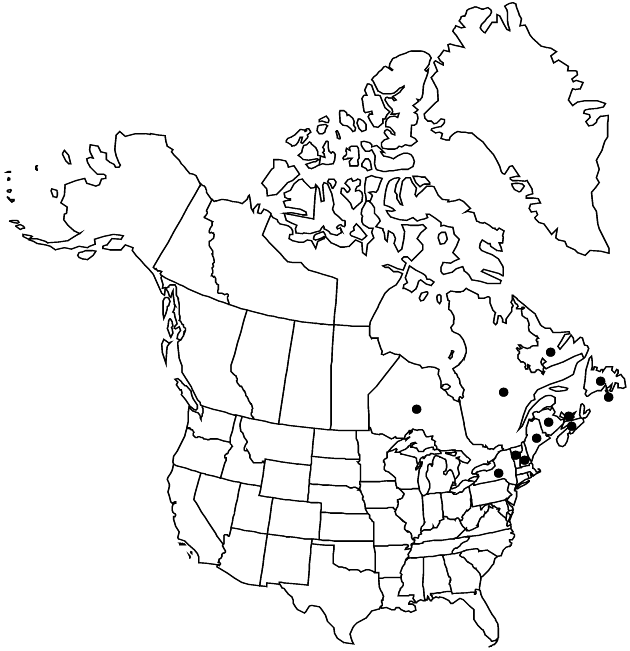Solidago macrophylla
Fl. Amer. Sept. 2: 542. 1813.
Plants 20–105 cm; rhizomes short, thick, woody. Stems usually 1, erect, strigose in arrays. Leaves: basal and proximal cauline narrowing abruptly to elongated petioles, blades spatulate to lanceolate or ovate, 60–120(–150) × 14–45(–65) mm, gradually reduced distally, margins serrate (teeth 4–17), abaxial faces glabrous, glabrous or hairy along nerves, adaxial glabrous or sparsely strigose; mid to distal cauline petiolate to sessile, abruptly to gradually tapering to short broadly winged petiole-like bases, blades lanceolate, 22–46(–57) × 8–20(–29) mm, bases rounded, margins entire to slightly serrate, apices acute to acuminate, faces glabrous or sparsely hairy. Heads 2–110+ (1–10 per branch) in leafy, racemiform or short, axillary and terminal racemiform-paniculiform clusters, lateral branches erect, 4–43 cm. Peduncles 5–25 mm, densely short hispido-strigose; bracteoles 0–3, linear. Involucres campanulate, (8.6–)9.5–11.5(–12.5) mm. Phyllaries in 2–3 series, sometimes weakly unequal, glabrate, margins ciliate; outermost ovate, 3–5(–7) mm, acuminate, innermost lanceolate, 1-nerved, tapering to rounded tip. Ray florets 7–13; laminae (4–)4.5–6.5 × 1–2 mm. Disc florets 14–29; corollas (4.4–)5–6 mm; lobes 1–2 mm. Cypselae (± linear-obconic) 1.4–4.4 mm, glabrous; pappi (3.7–)5–6.5(–7.3) mm. 2n = 18.
Phenology: Flowering Aug–Sep.
Habitat: Sandy and gravelly soils, rocky ledges, and outcrops, open areas in woods and thickets
Elevation: 0–1000+ m
Distribution

St. Pierre and Miquelon, N.B., Nfld. and Labr., N.S., Ont., P.E.I., Que., Maine, N.H., N.Y., Vt.
Discussion
Solidago ×calcicola (Fernald) Fernald (S. virgaurea Linnaeus var. calcicola Fernald) is considered to be a hybrid between S. macrophylla and possibly a member of subsect. Triplinerviae.
Selected References
None.